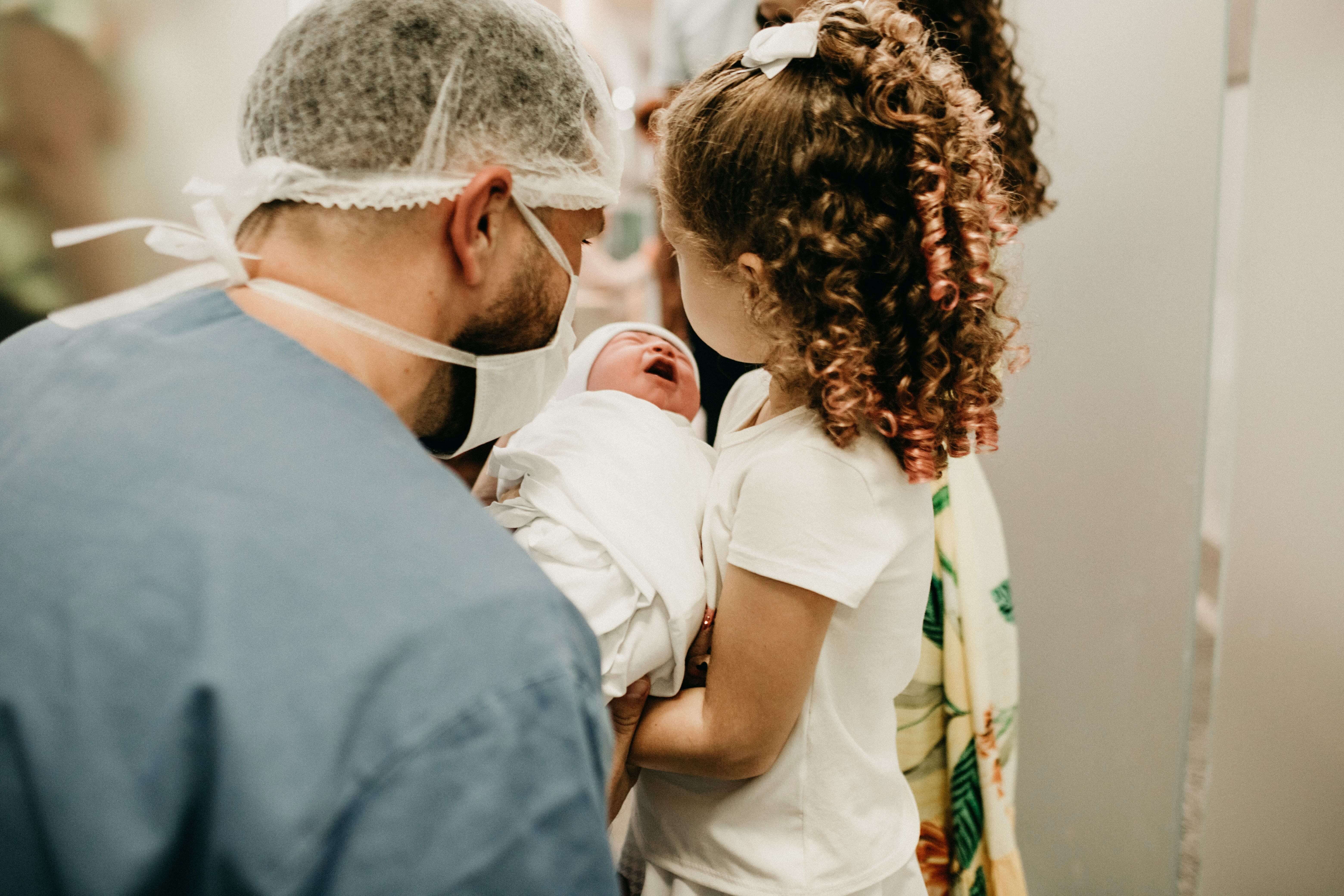July 6, 2023
November 3, 2020
Although it’s not the first thing that springs to mind when expecting a baby, preparing for the types of birth can and should be part of your perinatal considerations. If you’re having a baby in Spain, your healthcare provider will discuss your birth plan (plan de parto) as your due date gets closer – you’ll do well to think about the ideal type of birth, you and your partner’s personal preferences and whether or not the hospital or birth center can match your wishes.
You may think there are two types of births in Spain – vaginal or cesarean – when in reality there are additional words that are helpful to know when preparing to give birth in Spain.
And if you’re interested in learning birth-related lingo, here’s a list of words you’ll need to know.
Parto natural versus parto por cesárea: Natural versus cesarean birth
Natural births occur when a baby is born via vaginal birth. This can be with (parto medicado) or without medication; the most common pain management medication is an epidural, a nerve blocker inserted into your spine. Many women in Spain opt for pain management as soon as they are offered.
Cesarean births can occur for various reasons: a breeched baby (there are very few hospitals in Spain that will try for a vaginal birth if a baby is breech), multiples or distress to the mother or baby. In Spain, the national average of cesarean births is about 25%, and each autonomous community reports their averages annually. Ask your hospital about their C-section rate when choosing where to give birth.
As for pain management: laughing gas for labor is not common in Spain, and very few hospitals are using walking epidurals or water births for pain management.

Parto provocado / inducido - induction
Inductions are typically scheduled for several reasons, but it usually boils down to a baby thriving better outside of the womb than inside. In this type of birth, a doctor will administer medicine that will ripen the cervix and allow the mother to dilate; sometimes, waters must be broken to start contractions and move the birth along so as not to cause distress to mother or baby. This medicine, called pitocin, is a synthetic substitute for oxytocin, that natural hormone that signals the body to begin labor.
Inductions can lead to medical intervention by way of forceps (fórceps), vacuum (ventosa), spatulas (espátulas) or even a C-section.
If your doctor schedules you for an induction, you may need to call your insurance company to authorize the procedure. You will be admitted to the hospital before the oxytocin is administered.
Parto asistido – assisted delivery
When births are not progressing, doctors may need to make the decision to use medical instruments before a C-section.
My first child was induced at 40 weeks and a day due to low levels of amniotic fluid. I was disappointed that a healthy, happy pregnancy ended medically; Enrique was born after doctors gave me pitocin, broke my waters and had to use a vacuum to help him descend through the birth canal.
Doctors can employ the following instruments to help a baby who is near birth through the birth canal: fórceps, an instrument that resembles twolparge spoons, the ventosa, a vacuum that lightly sucks a baby’s head and – less commonly – espátulas, which are similar to fórceps.
Each come with their own risks. Your doctor will determine if intervention is necessary.

Parto vaginal después de cesára: PVDC (VBAC)
Women who have a C-section may still be able to deliver subsequent children via vaginal birth in what’s called a VBAC, or PVDC in Spanish. Speak with your doctor if you have had any sort of vaginal trauma that could impede this sort of delivery or if you have already had a child via C-section.
Preparing a birth plan (un plan de parto)
Depending on where you live in Spain, you may have a free choice about where to deliver your baby, particularly if you have both private and public health insurance. I considered two private hospitals and one public in Seville, where we have family and consider home, as well as a public and a private hospital in Madrid in case the babies came early.
No matter where you give birth, it’s important to have a copy of your birth plan and to discuss it with both your partner and your doctor. You can download a copy of a sample birth plan for reference at El Parto Es Nuestro.
Consider your ideal birth and also any alternatives in the event of unforeseen circumstances. Make several copies for any doulas, the doctor, your partner, and stick an extra copy in your hospital bag just in case. Even though women have been doing it for millennia, there are risks to childbirth so mentally preparing yourself can help if you need to make decisions during labor.

Giving birth in a private hospital versus a public hospital
I chose to give birth in a private hospital for both of my young boys, knowing that I would be transferred to the public hospital in the event of an emergency. The overwhelming factor for me was the connection I felt to the two obstetricians who delivered my babies, but I also considered the rate of cesarian births, the time of year they were born (both over holiday periods in Seville), the privacy factor and the proximity to my house.
Ask hospitals for their protocols, especially if you are high-risk or expecting multiples, or you’re interested in exploring a more natural option. At Caser Expat Insurance, they have several insurance policies that cover childbirth.
In Spanish they say, cada niño es un mundo (every child is unique) – I’d venture to say that every delivery is, too. With a myriad of factors, only the expectant mother can decide what is right for her.
My experience
My initial desire was to be non-medicated with both births. The other women in my prenatal classes must have thought I was nuts but I was hoping that the baby would arrive to the world as naturally as possible and begin nursing right away.
Enrique had other plans and decided he was perfectly fine in my tummy and not in the outside world. I was induced at forty weeks and one day and ended up with an epidural to relax and help me dilate; he was born 12 hours after I was admitted to the hospital.
Millán, on the other hand, came naturally, and I was only given a local anesthetic right before pushing, meaning I rode out the contractions and was more lucid through the four hours of labor. He was alert, latched right away and has been extremely healthy and observant in his 15 months of life. If we try for a third, I may well deliver anywhere but a hospital!
|
If you are searching for health insurance in Spain, Caser Expat Insurance has the right policy for you! |
.png?width=344&height=67&name=logo_caser%20(2).png)









Let Us Know What You Thought about this Post.
Put your Comment Below.